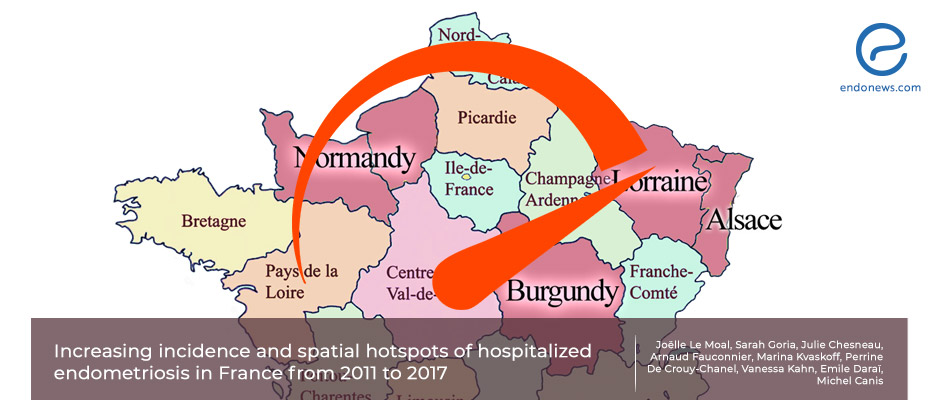Geography May Influence Risk of Endometriosis
May 31, 2022
The risk of developing endometriosis seems to differ in different regions of France.
Key Points
Highlights:
- There is geographical heterogeneity in the incidence of endometriosis across France.
Importance:
- This finding is the first step in the quest of clarifying environmental or other factors that may be contributing to the development of the disease.
What's done here:
- Researchers conducted a retrospective national descriptive study between 2011 and 2017.
Key results:
- The crude incidence rate of endometriosis between 2011 and 2017 was 9.85 per 10,000 person-years.
- The crude incidence rate of non-adenomyosis endometriosis between these years was 3.95 per 10,000 person-years.
- There was geographical heterogeneity in the incidence of endometriosis across France.
- The risk of endometriosis increased by 8.5% between 2011 and 2017.
- The risk of non-adenomyosis endometriosis increased by 3.6% between those years.
Limitations:
- The results may vary due to the evolution of local clinical practices over time.
- Only hospitalized cases of endometriosis were included in the study, which means that the incidence of the disease is underestimated.
- No information was available about other potential contributing factors such as women’s body mass index, alcohol or tobacco consumption, nutrition habits, or lifestyle.
Lay Summary
The risk of developing endometriosis seems to be geographically heterogeneous across France, according to results from a study published in the journal Scientific Reports. The study identified 20 high-risk hotspots around the country. These showed similar results for non-adenomyosis endometriosis cases.
“Shifting practice patterns, improved awareness and healthcare disparities interlinked with environmental risk factors could explain these trends,” the authors of the study wrote.
Endometriosis is a debilitating disease thought to affect around one in ten women of reproductive age. The exact cause of the disease is not known but it is thought that exposure to endocrine disruptors may, at least in part, play a role in its development.
In the present study, a team of researchers led by Dr. Michel Canis monitored endometriosis across France and analyzed spatial trends in order to explore possible environmental factors that may be contributing to the development of the disease.
The team identified 207,462 cases of endometriosis between 2011 and 2017. Of these, 83,112 were non-adenomyosis cases. The crude incidence rate of the disease for the period of the study was 9.85 per 10,000 person-years. For non-adenomyosis cases, the incidence rate was 3.95 per 10,000 person-years.
The researchers also calculated that there was geographical heterogeneity in the incidence of endometriosis across the country. Moreover, they found that the risk of disease increased by 8.5% from 2011 to 2017. For non-adenomyosis cases, the risk increased by 3.6%.
“This work is the first step of long-term monitoring of endometriosis in France, and it will allow us to target future ecological studies to better explore environmental hypotheses,” the authors said.
Research Source: https://pubmed.ncbi.nlm.nih.gov/35484205/
environmental factors risk of endometriosis endometriosis incidence

